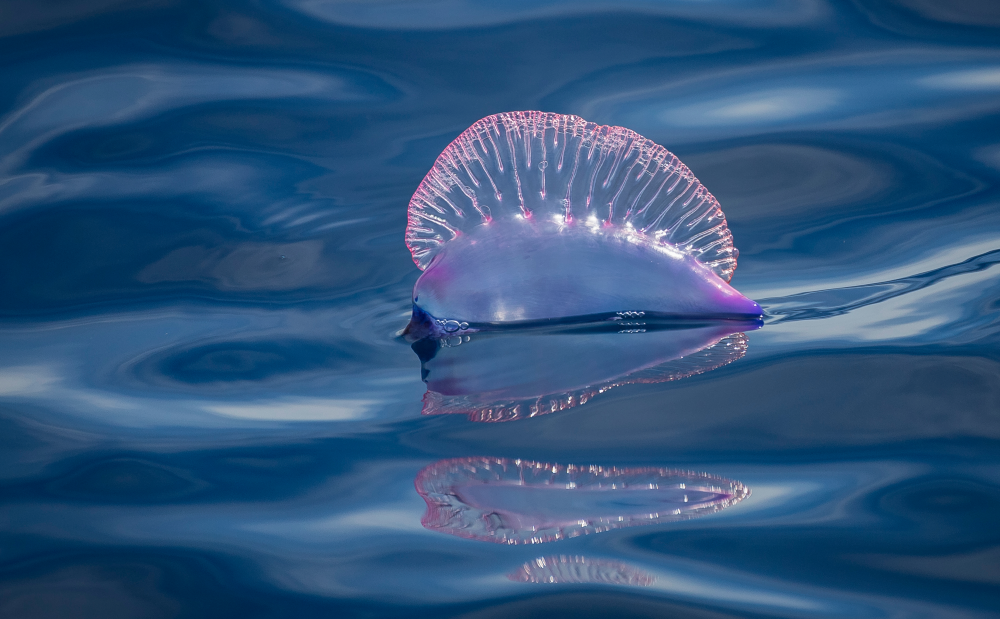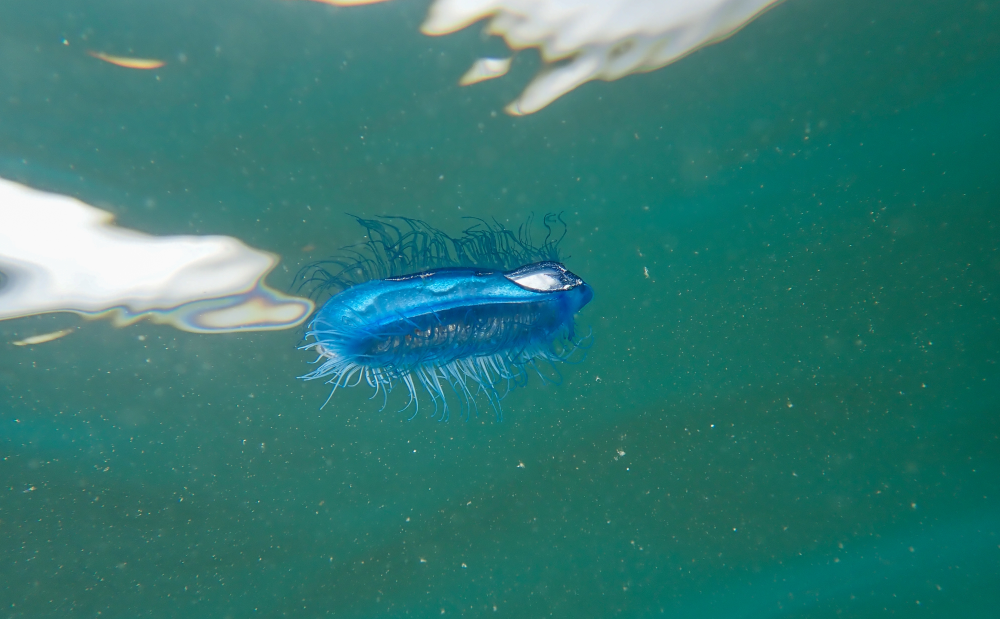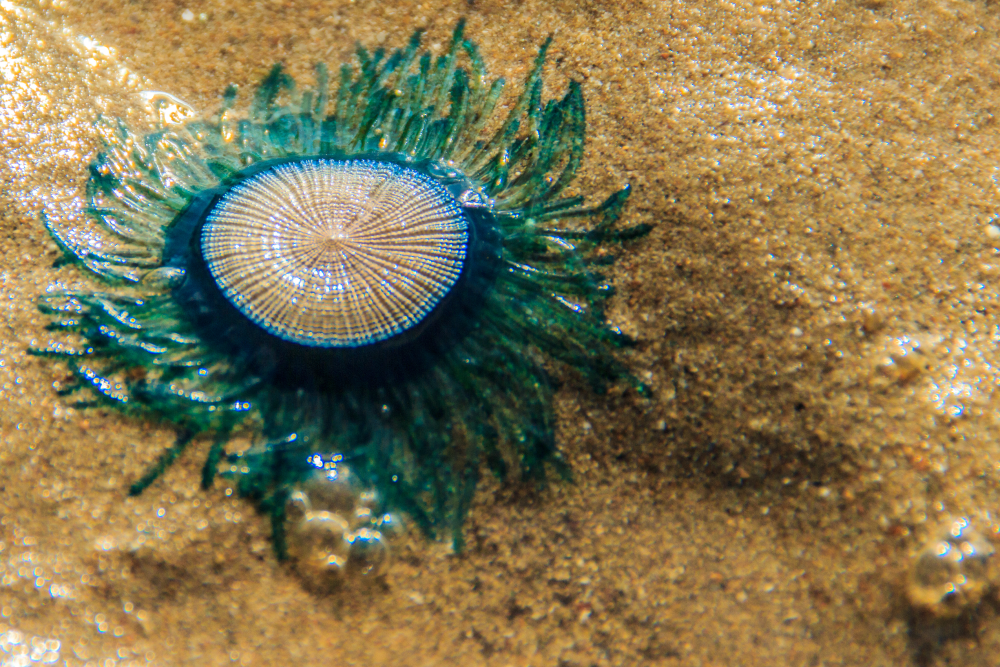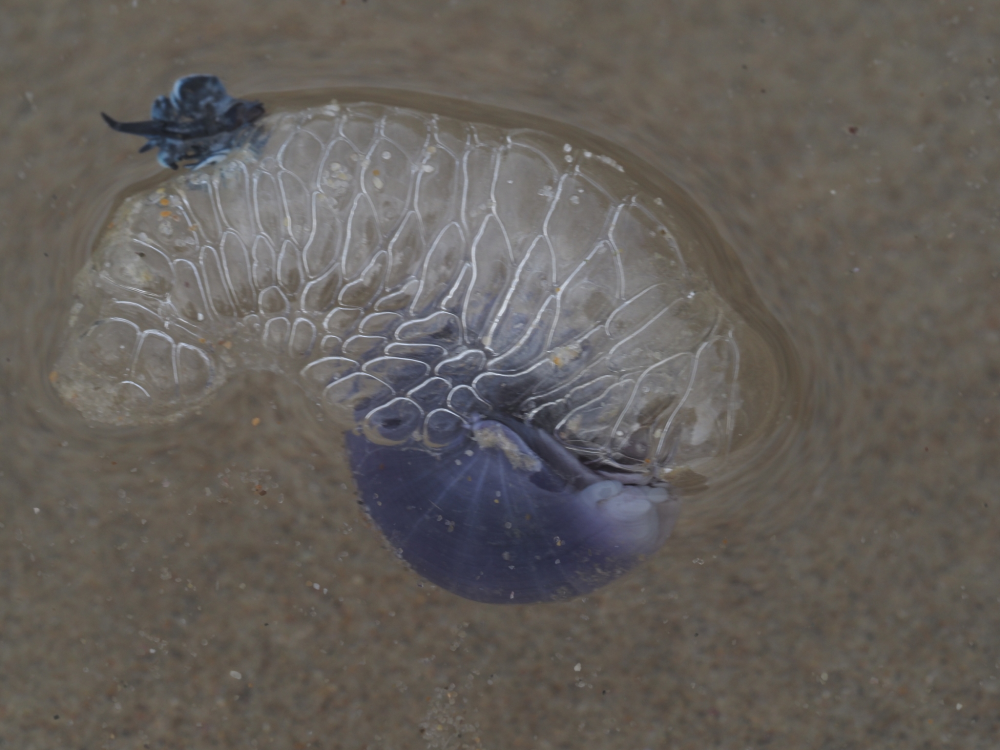The Great Pacific Garbage Patch (GPGP) is a collection of floating trash about twice the size of Texas. It’s perhaps the most dramatic example, but by no means alone when it comes to islands of floating trash – and yet there’s something else to be found here other than discarded human garbage.
The diversity of species living within the GPGP was revealed when Ben Lecomte casually decided to swim through it, collecting samples as he journeyed from Hawaii to California. Those samples then went into a 2023 paper that explored the many neuston (sometimes called pleuston) species found floating on its surface. The biodiversity is so abundant, in fact, that the GPGP potentially represents an ecosystem as valuable as the Sargasso Sea. Not quite the trash island we all had in mind, then.
Researchers on another paper say that islands like the GPGP represent a new type of ecosystem they’re coining “neopelagic communities,” that’s even home to some species usually found exclusively in coastal environments. It seems the plastisphere has opened up a whole new niche for species, so let’s take a look at who’s moved in.
Predatory Blue Dragons
Glaucus atlanticus (pictured above), also known as blue dragons or, our personal favorite, “the dragon slug”, is an unusual species of nudibranch whose threat level increases based on their recent dietary habits. Partial to the deadly Portuguese Man o’ War, as well as other venomous siphonophores, the vibrant sea slugs are able to retain the stinging nematocysts from their meal and deploy them along their “fingers” which they use when hunting.
The sting of a blue dragon can actually be as severe as that of a Portuguese Man o’ War, proving very painful and even dangerous to humans despite their small size. They’re usually found bobbing along in the open ocean, but they can sometimes wash up on beaches, and now it seems a significant number are getting swept up by the GPGP.
Slime-Rafting Venomous Snails
The sea snail Olivella semistriata is a suspension-feeding, swash-surfing snail that can be found on the tropical sandy beaches of the East Pacific. They spend much of their time in the intertidal zone, where the changing tide flushes and withdraws from the shoreline. Their habitat here has inspired an ingenious passive feeding strategy whereby the snails extend two wing-like appendages lavished in mucous from the snail’s foot.
If the snails want to get a bit more distance, they can also make a speedy exit back into the ocean by putting these flaps to work in a different way. By extending them as well as their foot, they can essentially surf the waves and pump these flaps to gather more momentum until they reach a good spot. It appears that sometimes, that spot is the GPGP.
Portuguese Man o’ War

The top bit won’t sting, but we don’t recommend you touch them for a TikTok video all the same.
Image credit: Gonzalo Jara / Shutterstock.com
The Portuguese Man o’ War (or Bluebottle) is one of the most dangerous creatures in the ocean. Often confused for jellyfish, they’re actually siphonophores, not a single animal but made up of a colony of organisms working together.
They float through the ocean, trapping small fish on their tentacles for food, while the “bladder” at the top floats them, filled with gases including carbon monoxide. When a fish or other crustacean is caught, they are digested in “bag-like stomachs” located underneath the float.
By-The-Wind Sailors

The underside of a less dangerous breed of Great Pacific Garbage Patch animal.
Image credit: boulham / Shutterstock.com
Velella velella is a colony of specialized individual polyps, much like their fellow sailors the Portuguese Man o’ War. Instead of living attached to rocks on the seabed, the water surface has become its substrate.
Also known as by-the-wind sailors, its body is a flat oval disk that contains a series of air-filled chambers that provide buoyancy. Below hangs a central mouth surrounded by specialized reproductive bodies that produce tiny medusae, little “jellyfish”, and stinging tentacles – which are harmless to humans.
Blue Buttons

What the blue button lacks in not being a jellyfish it makes up for in being stupidly pretty.
Image credit: Christopher PB / Shutterstock.com
The blue button, Porpita porpita, is another looks-like-a-jelly, stings-like-a-jelly, non-jellyfish. Made up of a colony of hydrozoan polyps, it has a floaty button lined with many stinging tentacles and feeds on free-floating plankton.
The GPGP formed due to the eastern North Pacific Subtropical Gyre, a current that has been scooping up trash to accumulate the enormous heap. Unfortunately, that’s why it’s also snagged so many free-floating marine species.
Violet Snail

A rafting violet snail getting photobombed by a blue dragon.
The violet snail (Janthina janthina) is another predatory GPGP roommate. It rides around the ocean on a mucus bubble raft and actually hunts a few of its neighbors, including by-the-wind sailors and Portuguese Man o’ War.
Crustaceans
Marine species that normally live in coastal environments may be becoming a permanent fixture of the open ocean thanks to trash islands like the GPGP. In a study, rope proved to be among the most popular habitats within it, and one of the most common groups of animals living within it were crustaceans such as crabs and isopods, including the many-legged Ianiropsis serricaudis.
Life among the garbage might feel depressing, but it’s an example of the remarkable resilience of wildlife that will set up camp pretty much anywhere. However, it does complicate existing approaches to “ocean clean-up,” as if we go around simply scooping all the trash out of the sea, we’re going to kill a lot of vital wildlife in the process.
Source Link: Seven Bizarre Animals That Live In The Pacific Garbage Patch